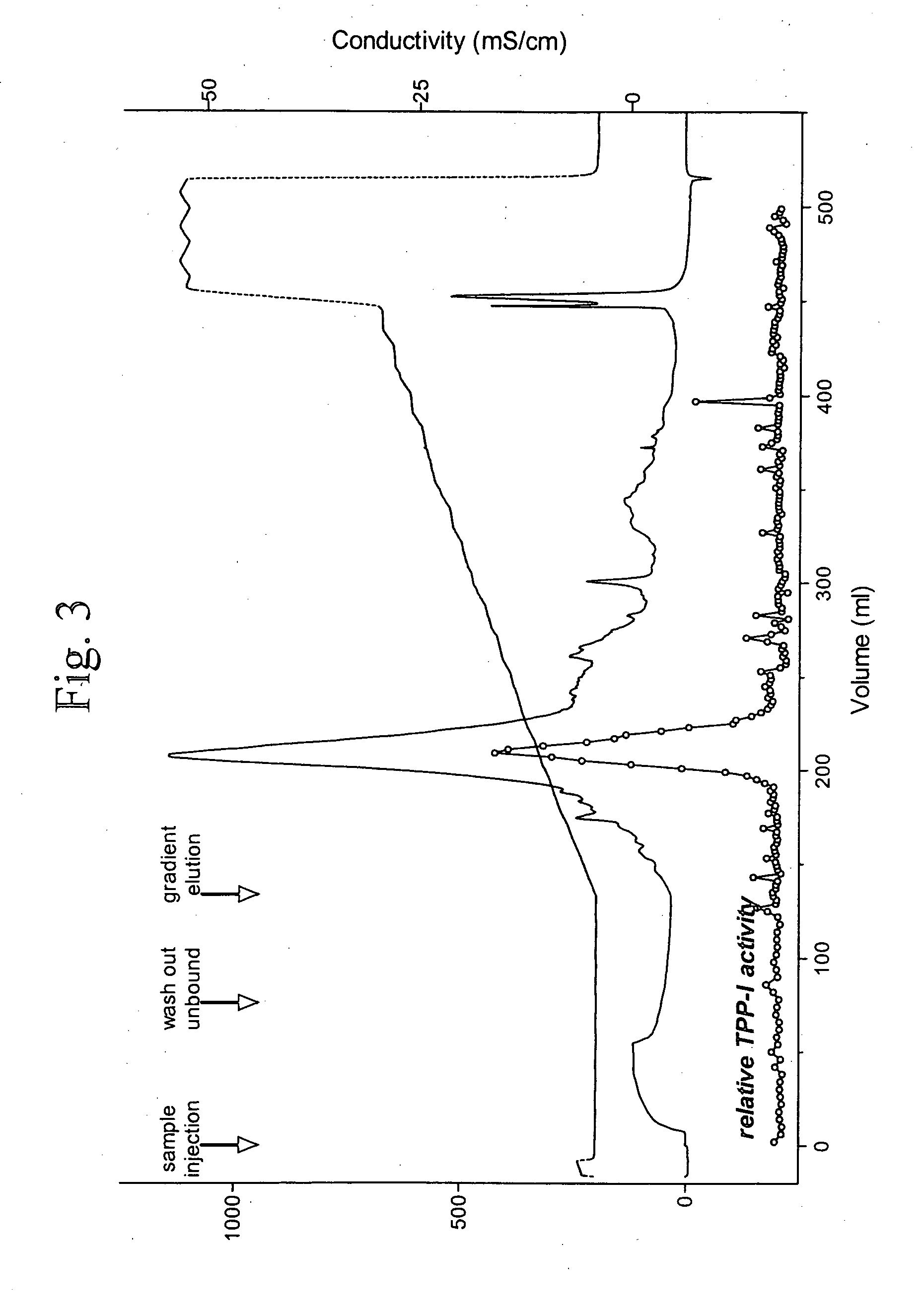Recombinant human CLN2 protein and methods of its production and use
a technology of human cln2 and cln2 protein, which is applied in the direction of peptide/protein ingredients, drug compositions, metabolic disorders, etc., can solve the problems of no effective treatment of ncl, all childhood forms are eventually fatal, and the effect of reducing or eliminating symptoms
- Summary
- Abstract
- Description
- Claims
- Application Information
AI Technical Summary
Benefits of technology
Problems solved by technology
Method used
Image
Examples
examples
Plasmid Construction, Cell Selection and Gene Amplification
[0033]CHO cells were transfected with PvuI linearized pMSXND1 CLN2 (a fragment corresponding to nucleotides 1-1707 of human CLN-2 cDNA (Genbank Accession No. AF017456, 175 Arg variant) in the expression vector pMXNS [8]) using the lipofectamine procedure (Gibco). Stable transfectants were isolated by selection with 700 microgram / ml G418 and individual colonies isolated using cloning cylinders. Select colonies were treated with 0.2 micromolar MTX in ct-MEM without nucleotides / 10% dialyzed FBS to select for cells that had undergone gene amplification. When cells became resistant, the MTX concentration was increased and the procedure repeated. After twelve cycles of selection, cells resistant to 400 micromolar methotrexate were obtained.
[0034]The TPP-I activity assay was conducted using a modification of the method of Vines and Warburton (Biochem. Biphys. Acta. 1998 1384 pp233-42). Unless indicated otherwise, sample...
PUM
| Property | Measurement | Unit |
|---|---|---|
| volume | aaaaa | aaaaa |
| flow rate | aaaaa | aaaaa |
| pH | aaaaa | aaaaa |
Abstract
Description
Claims
Application Information
 Login to View More
Login to View More - R&D
- Intellectual Property
- Life Sciences
- Materials
- Tech Scout
- Unparalleled Data Quality
- Higher Quality Content
- 60% Fewer Hallucinations
Browse by: Latest US Patents, China's latest patents, Technical Efficacy Thesaurus, Application Domain, Technology Topic, Popular Technical Reports.
© 2025 PatSnap. All rights reserved.Legal|Privacy policy|Modern Slavery Act Transparency Statement|Sitemap|About US| Contact US: help@patsnap.com



